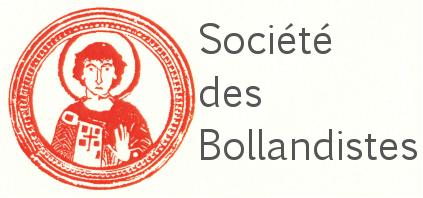General Editors
- Jeanne-Nicole Mellon Saint-Laurent, Marquette University
- David A. Michelson, Vanderbilt University
Editorial Committee
- Chair: Dr. Jeanne-Nicole Mellon Saint-Laurent, Marquette University
- Dr. André Bingelli, Institut de recherche et d’histoire des textes, Centre National de la Recherche Scientifique, Paris
- Dr. Claude Detienne, Instituto de Filosofia e Teologia de Goiás, Brazil
- Dr. Maria Doerfler, Duke University
- Ex Officio: Dr. David Michelson, Vanderbilt University
- Dr. Sr. Jincy Othottil, Chaldean Syrian College, India
- Dr. Aho Shemunkasho, Salzburg University
- Dr. Jack Tannous, Princeton University
- Fr. Ugo Zanetti, Monastère de Chevetogne
Qadishe: A digital catalogue of saints in the Syriac Tradition
Qadishe, or “saints” in Syriac, is a digital catalogue of saints or holy persons venerated in the Syriac tradition. Some saints are native to the Syriac-speaking milieu, whereas others come from other linguistic or cultural traditions. Through the translation of their hagiographies and the diffusion of saints’ cults in the late antique world, saints were adopted, “imported,” and appropriated into Syriac religious memory.
Each individual saint listed in Qadishe has his or her own entry. Qadishe contains biographical and historical information about these persons. Saints are listed by name and arranged alphabetically in English and Syriac. Entries are tagged according to hagiographic topoi and motifs. In this volume, we have included any persons venerated in the Syriac tradition, and we have not distinguished between “historically verified” persons and “fictive” persons. Our starting point for collecting data was J. M. Fiey’s Saints syriaques, which has 470 entries.
Under each individual entry, we have listed the saint’s name in Syriac and Roman transliterated script, as well as English and French. We have also written a brief abstract about the person. We included primary and secondary literature on him or her, as well as his or her birth, death, or floruit dates when known. We identify and list persons associated with the saint. Information on the saint is searchable by the person’s name or by the era in which he or she lived. We have also linked any references to place names associated with this person to The Syriac Gazetteer, a geographic database within Syriaca.org listing settlements and locations relevant to the Syriac world. Some of the saints in Qadishe are native to the Syriac tradition, whereas others were “imported” into Syriac from other linguistic traditions, including Greek. If they have been granted a religious commemoration (whether in text or liturgy) in the Syriac heritage, they are included in Qadishe. Qadishe includes saints whose lives have been edited, minor saints referenced in the lives of other saints, and saints who receive commemoration in liturgical calendars. The names of those saints whose lives have not yet been edited are included in Qadishe, but the descriptions describing these persons are not yet developed.
Qadishe shows scholars how hagiographic literature contains fertile areas in which to discover connections (sometimes fictive) between saints themselves or the communities and monasteries they symbolized. Hagiographers created relationships among saints to promote their communities’ prestige, antiquity, and orthodoxy. It is precisely this interconnected nature of Syriac hagiography that makes it so amenable to TEI encoding and linked data.
How to Cite Qadishe
Notes: Jeanne-Nicole Mellon Saint-Laurent and David A. Michelson, general editors; Daniel L. Schwartz, technical editor, Qadishe: A Guide to the Syriac Saints, vol. 2 of The Syriac Biographical Dictionary, ed. Nathan P. Gibson, David A. Michelson, Jeanne-Nicole Mellon Saint-Laurent, and Daniel L. Schwartz (Syriaca.org: The Syriac Reference Portal, 2016-), http://syriaca.org/q
Bibliography: Saint-Laurent, Jeanne-Nicole Mellon, and David A. Michelson, general editors; Daniel L. Schwartz, technical editor. Qadishe: A Guide to the Syriac Saints. Vol. 2 of The Syriac Biographical Dictionary, edited by Nathan P. Gibson, David A. Michelson, Jeanne-Nicole Mellon Saint-Laurent, and Daniel L. Schwartz. Syriaca.org: The Syriac Reference Portal, 2016-. http://syriaca.org/q
Image provided by Paul van Moorsel Centre for Christian Art and Culture, VU Universiteit Amsterdam under the terms of the Creative Commons Attribution 4.0 International License.
 Fondazione
Internazionale Balzan
Fondazione
Internazionale Balzan 





